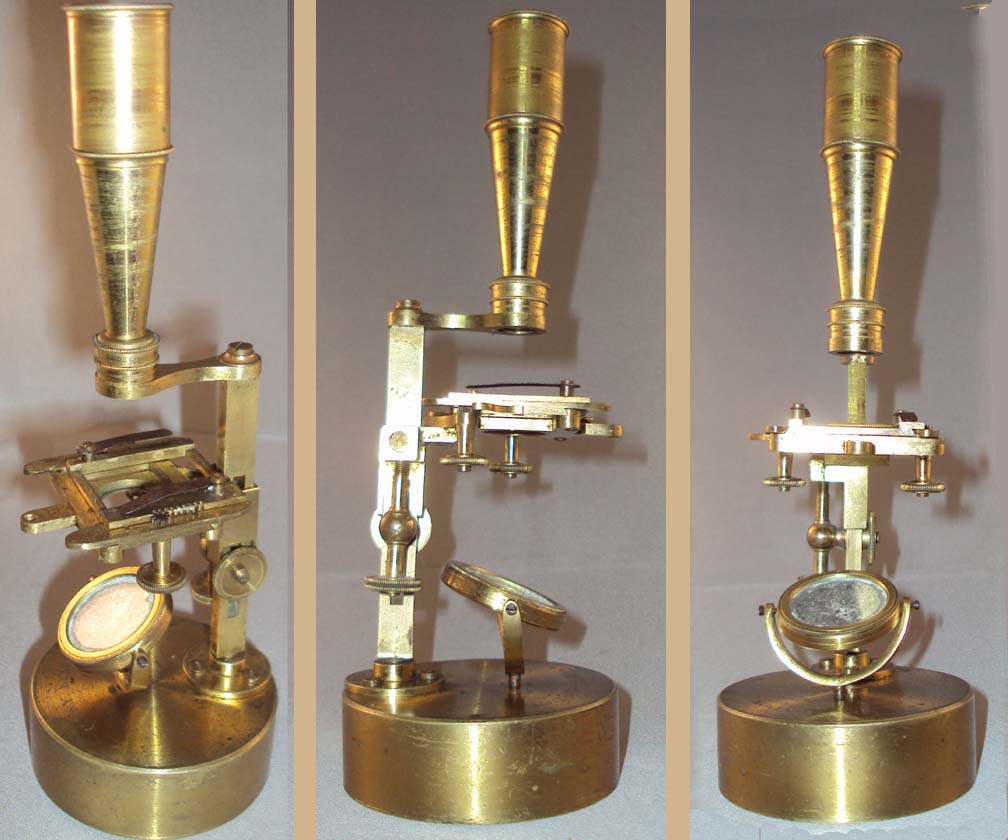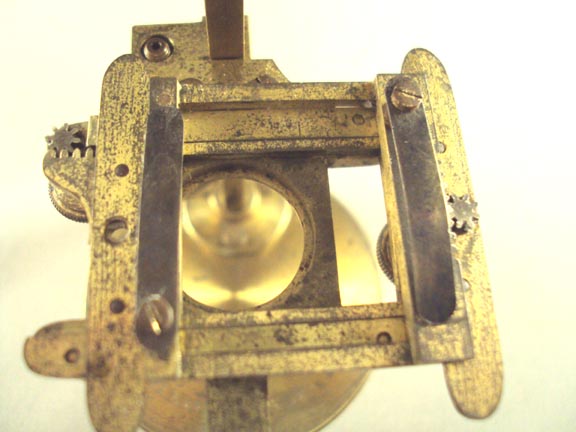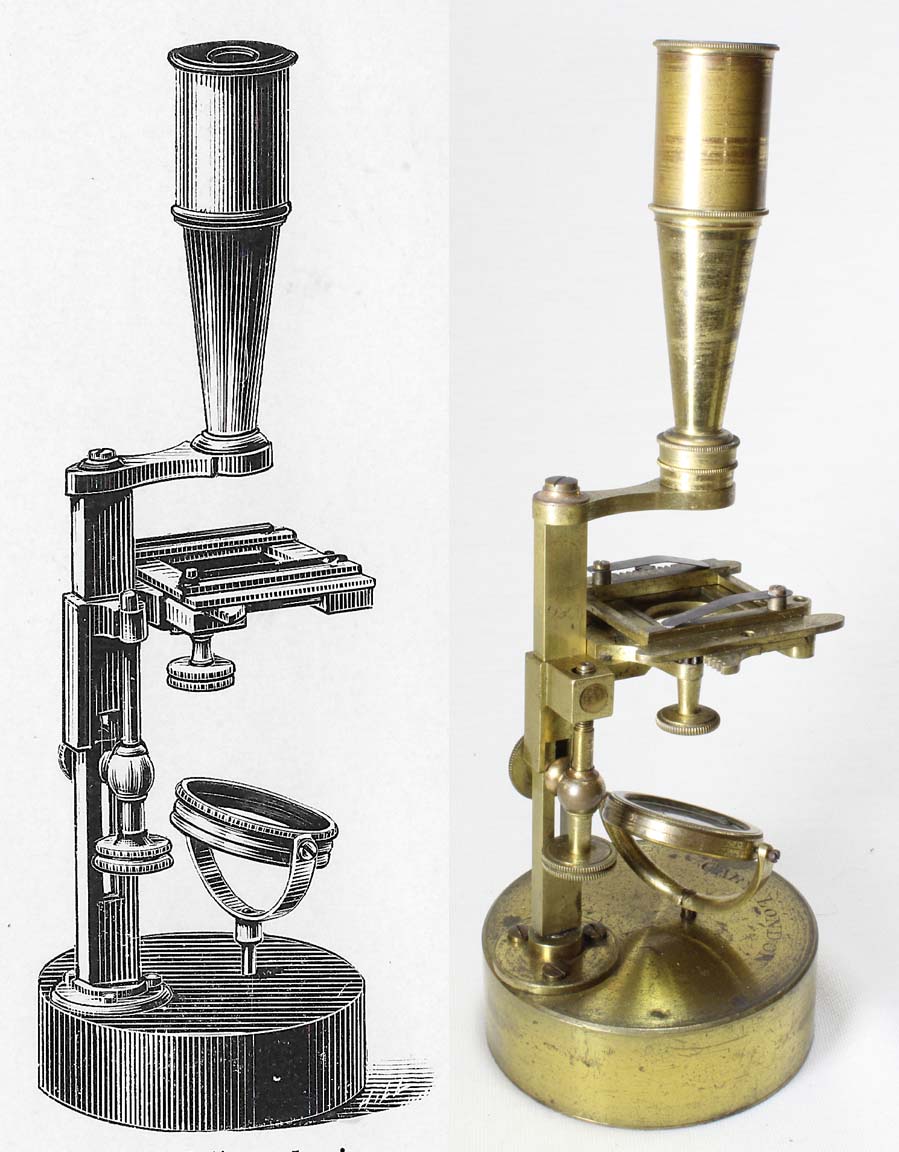unknown
| DESCRIPTION | HISTORY |



Gould's Improved Pocket Compound Microscope, the optical tube and accessories are the same small size as that smallest box-mounted version. This microscope is identical to number 58 in Gerard Le'Turner's book The Great Age of the Microscope. The entry for that microscope contains an error stating that the focus is by rack and pinion; both this example and the number 58 in Turner's book have sliding coarse focus and fine focus by Helvesius screw. Coarse focus is acheived by loosening the locking knob and sliding the mechanism up or down in the channel. Fine focus, after locking the mechanism is achieved via the finely threaded screw. Fittings include the stage clips, two stacking objectives similar to those on the small boxed Cary-Gould type microscopes, and a livebox also similar to that supplied with the boxed smaller version.
 This is a variation on the classic Cary-Gould microscope. The original design, also in this collection, is attributed to Charles Gould, a skilled instrument maker who was employed by the Cary company as their foreman for microscope production. Gould became quite famous and several early advances in microscope construction and even slide-making may be traced to him. One of the advancements is featured on this microscope and was referred to as 'Gould's Adjusting Stage' as described in 'Gill's Technological Repository' for 1829. This stage is one of the earliest X-Y mechanical stages, and a precursor to the large ones used on larger microscopes of the 1830's and 1840's. It still works well, even today. E.M. Nelson commented in a letter to the RMS, that one of the most important features of this microscope, as opposed to others, was that this model features optics designed by Coddington.
This is a variation on the classic Cary-Gould microscope. The original design, also in this collection, is attributed to Charles Gould, a skilled instrument maker who was employed by the Cary company as their foreman for microscope production. Gould became quite famous and several early advances in microscope construction and even slide-making may be traced to him. One of the advancements is featured on this microscope and was referred to as 'Gould's Adjusting Stage' as described in 'Gill's Technological Repository' for 1829. This stage is one of the earliest X-Y mechanical stages, and a precursor to the large ones used on larger microscopes of the 1830's and 1840's. It still works well, even today. E.M. Nelson commented in a letter to the RMS, that one of the most important features of this microscope, as opposed to others, was that this model features optics designed by Coddington. The Companion to the Microscope and a description of C. Gould's Improved Compound Pocket Microscope which has all the uses of the Single, Compound, and Opaque Microscopes London: Sold by W. Cary, 181 Strand. Although the title was as noted, the figure in the booklet described it:
Answering the purpose of the single, Compound, Opaque, & Aquatic Microscope.It was first developed sometime in the 1820's and the first edition of Gould's booklet was said to be published in 1827, yet by 1829 it was in its
sixth edition. For more information about the history and details of the original box-mounted (
Gould's Improved Pocket Compound Microscope) design, see the entry for that instrument. For more information about Gould's booklet, see here.